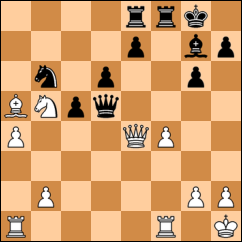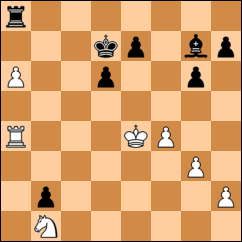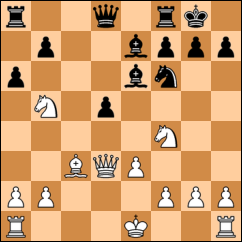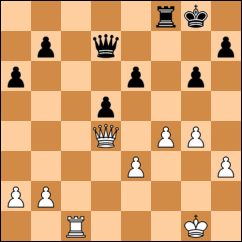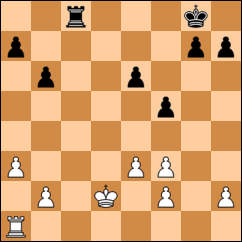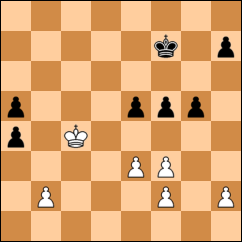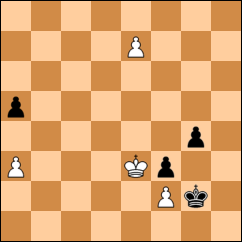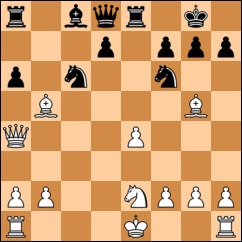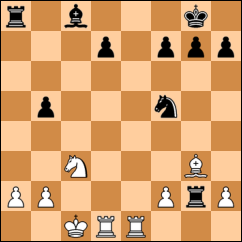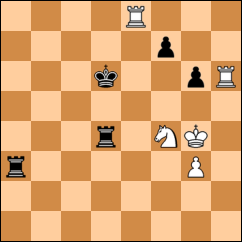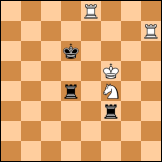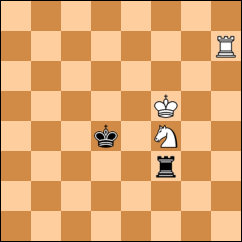At the same time, we're still reaching out to advanced players in the hope of providing satisfactory competition at the higher end. This weekend, we changed the format of the Route 20 Open Swiss from 4/SS, G/45 to 3/SS, G/65 after players at our Pecatonic Octads indicated that they preferred the longer time control. It was a modest field, but one that allowed a couple of young Class B players from our backyard, Caleb Larsen and Ben Spinello, to shine. Caleb won all three of his games; Ben won two before losing to Caleb and shared second place with Dane Bell and our own Will Engel.
In the RBO, the Pretzel Kings' Zach Kauffman -- free, as of July 1, of the low rating that kept attracting the blessings of the Bye Fairy -- finally had the opportunity to rise to the top of his section without being penalized on tiebreaks. He won the first-place trophy with four wins and a draw; past trophy winner Leo Ma of Madison placed second with the same score. Route 20 member Ken Conter came in third.
Complete results may be found on our tournament results page; click here for official crosstables and post-event ratings.
On to the highlight reel:
 |
| Ben Spinello and Caleb Larson |
B.Spinello–C.Larsen
Route 20 Open Swiss (3)
Freeport, Ill., July 9, 2011
1.d4 Nf6 2.c4 c5 3.d5 b5 4.cxb5 a6 5.b6 Qxb6 6.Nc3 d6 7.e4 g6 8.Nf3 Nbd7 9.Be2 Bg7 10.0-0 0-0
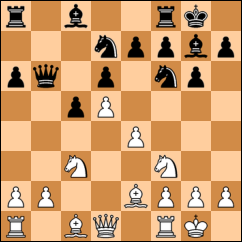
11.Kh1 a5 12.Nd2 Ba6 13.a4 Bxe2 14.Qxe2 Ne8 15.Nb5 Nc7 16.Nc4
The knight sets off on a long walk.
16...Qb7 17.Nca3
Ben may be slightly better off initiating the trade on c7.
17...Rae8
Meanwhile, Caleb's other knight looks strong on b6.
18.f4
18.Bd2 is another possibility that looks good for Ben.
18...Nxb5 19.Nxb5 f5 20.Bd2 fxe4
Now is not the right time for 20...Bxb2?, which leads to a strong position for Ben: 21.Rab1 Bg7 22.Nxd6 Qxb1 23.Rxb1 exd6 24.Qa6.
21.Qxe4 Nb6 22.Bxa5 Qxd5
Not 22...Nxd5 23.Rad1 Ra8 24.Bc3, which strongly favors Ben. The alternative 24.Rxd5?! Rxa5 25.b3 Kh8 is slightly better for Caleb.
23.Qxd5+?
With the queen trade, things begin to go awry for Ben. Better is 23.Qe1 Qc6 24.Bxb6 Qxb6 25.Qe6+ Kh8 26.Rab1, which maintains an equal position.
23...Nxd5 24.Bd2?
Another stumble, as Caleb no longer has any reason not to pick off the weak b-pawn. 24.Bc3, challenging Caleb's fianchettoed bishop, is better. From here, it's all uphill for Ben.
24...Bxb2 25.Ra2 Bg7 26.g3 Ra8 27.a5
There's hope of rescue on the horizon after 27.Kg2 Rfb8 28.Rb1 Nb4 29.Bxb4. If black plays the dubious reply 29...cxb4?!, white can obtain an equal position with 30.Rxb4 e5 31.Rd2. But after 29...Rxb5 30.axb5 Rxa2+ 31.Kf3, black must play 31...cxb4; if he blunders with 31...Rxh2??, white will push his b-pawn in.
27...Rfb8 28.Rb1 Nc7
28...Nb4 29.Nc7 Nxa2 30.Rxb8+ Rxb8 clinches the victory.
29.Nc3 Rxb1+ 30.Nxb1 Na6 31.Na3 Nb4 32.bxb4 cxb4 33.Nb1 b3 34.Ra4 b2 35.a6 Kf7 36.Kg2 Ke8 37.Kf3 Kd7 38.Ke4
38...e6
38...Kc6 is just as effective at keeping Ben's king from running the barricade and brings Caleb's king farther forward as well.
39.Na3??
A blunder that permits 39...Rc8 40.Rb4 d5+! 41.Kd3 Rc3+ 42.Kd2 Rxa3.
39...Kc6 40.Kd3 d5 41.Kc2 Kb6 42.Rb4+ Kxa6 43.Nb5 Rc8+ 0-1
In the RBO, after a slight stumble in the opening, Zach plays a safe and solid game to secure a draw against the higher-rated Leo:
Z.Kauffman–L.Ma
Route 20 Rated Beginners' Open (2)
Freeport, Ill., July 9, 2011
1.d4 d5 2.e3? Nf6 3.c4 e6 4.cxd5 exd5 5.Bd3 Be6 6.Bd2 Bd6 7.Nc3 Nbd7 8.Nge2 c5 9.Nb5 Be7 10.dxc5 Nxc5 11.Bc3 Nxd3+ 12.Qxd3 0-0 13.Nf4 a6
14.Nxe6
Zach should take a look at 14.Nd4!? Ne4 15.Ndxe6 fxe6 16.Nxe6 Nxf2 17.Qc2. Leo doesn't have time to take the rook in the corner with his own queen under attack, and Zach gets his draw after 17...Qb6 18.Nxf8 Qxe3+ 19.Qe2 Nd3+ 20.Kd1 Nf2+ 21.Ke1 Nd3+ 22.Kd1. (After anything else -- say, 17...Qd7 -- it's much worse for Leo: 18.Nxf8 Rxf8 19.0-0 Ne4 20.Rxf8+ Bxf8 21.Bd4, and Zach's material advantage is locked in.)
14...fxe6 15.Nd4 Qd7 16.0-0 Ne4 17.Rac1 Nxc3 18.Rxc3 Bf6 19.f4 g6 20.h3 Bg7 21.Rcc1 Rac8 22.g4 Bxd4
22...Rxc1!? is Leo's last chance to hold on to the slight advantage he's got: 23.Rxc1 e5 24.fxe5 Qe7.
23.Qxd4 Rxc1 24.Rxc1
24...Qg7?
A mistake that allows Zach to gain the upper hand with 25.Qb6 Qf6 26.Qxb7.
25.Qxg7+
Zach opts for an equal endgame instead.
25...Kxg7 26.Rc7+ Rf7 27.Rxf7+ Kxf7 28.Kf2 Kf6 29.Ke2 e5 30.Kd3 b5 31.b4 h6 32.a3 Ke6 33.Kc3 h5 34.Kd3 Kf6
After some dancing back and forth, with time running out on both clocks, Zach and Leo shake on it.

